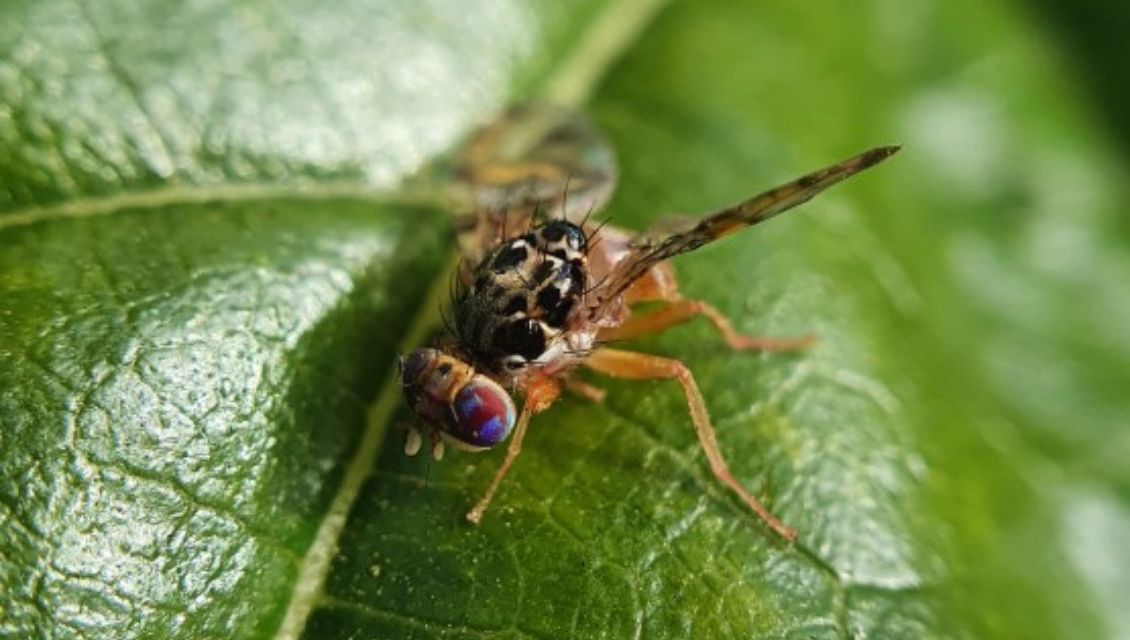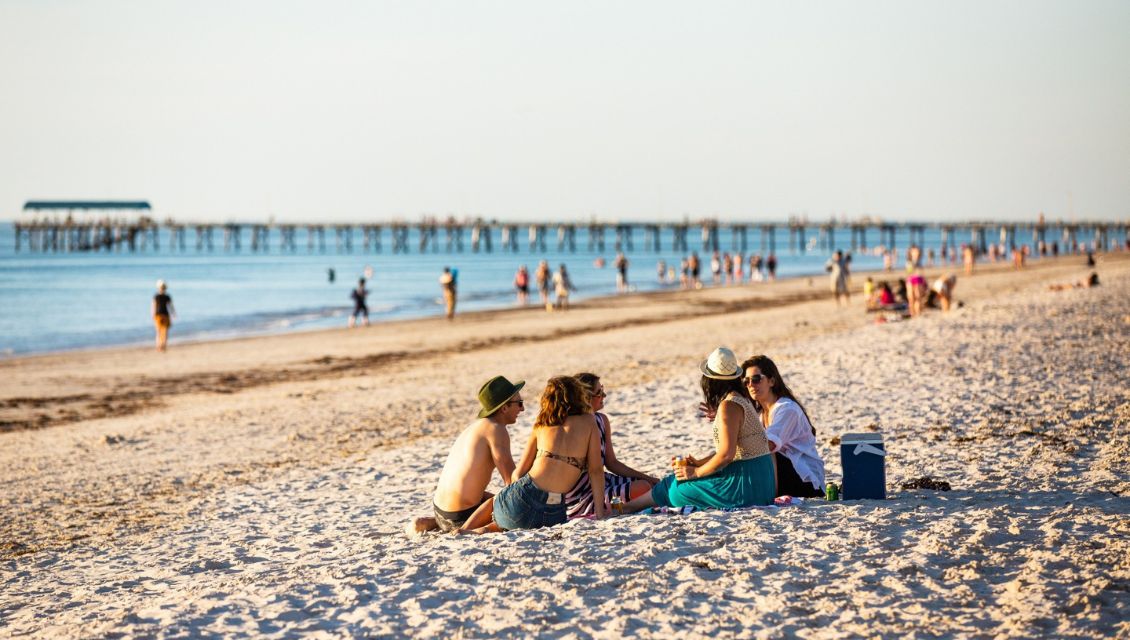
March 31, 2009, is a date Yvie Eglinton will never forget.
It was the day her life changed forever. The day she instantly realised that her entire life going forward was going to be radically different from the one she had planned.
Lying on the Brighton Esplanade on that autumn morning, dazed and seriously injured, Yvie found the presence of mind to tell bystanders not to move her off the road. Her spine was broken, and she knew it.
"I was riding to work and I was having issues with my chain," Yvie says.
"I had to stop and fix it, and then I had to catch up to my partner who was still riding.
"It was slightly uphill, so I was up off my saddle and there was a little pothole. My bike stopped and I went over the handlebars.
"That was it, it was a very simple accident. If I’d been sitting on my saddle, I wouldn’t be here  with you today – I would have just wobbled through it."
with you today – I would have just wobbled through it."
Yvie says she "pin-dropped" onto her head and credits her helmet with saving her life that day.
"I knew straight away that it was a spinal cord injury," she says.
"My partner saw the whole thing happen. He couldn’t call the ambulance because he was just too shocked and panicked.
"So, somebody called the ambulance for us, and I remember telling my partner that I couldn’t feel my legs and I couldn’t feel my abs.
"I had people trying to help, saying they were going to prop me up on a pillow, and I was like 'don’t move me, leave me here, I have a spinal cord injury'."
The eventual diagnosis was a dislocation and fracturing of the T4 and T5 vertebrae, which caused the cord injury, and – unknown at the time – a burst fracture of the C1 vertebra.
A devastating injury, but in typical Yvie style she can still find a positive.
"If you get spinal cord damage at the C1 then usually it’s either death or life as a ventilated quadriplegic, so I actually count myself lucky that I ended up as a T4 paraplegic," she says with a wry smile.
"I had my accident two days before my 30th birthday, so at least I had 30 years of walking."
Yvie travelled first to Flinders Medical Centre, then to the RAH where she came under the care of renowned spinal surgeon Professor Brian Freeman who ended up operating that evening.
Two-and-a-half weeks in the RAH was then followed by four-and-a-half months at Hampstead Rehabilitation Centre.
Upon release, Yvie says there was no question that she was going to resume her job with the Department for Environment and Water (DEW) – but she knew she was going to have to "pivot" in a way few are ever forced to do in their career.
As a project officer with the department’s marine parks team, marine biologist Yvie loved doing field work, particularly if it involved the chance to don the scuba gear and do dive surveys and habitat-mapping.
In other words, she wasn’t a big fan of being tethered to a desk.
Within seven months, Yvie was back working at DEW, and she says her old colleagues "welcomed her back with open arms".
"That was fantastic," she says.
"Nobody really treated me any differently."
And while resuming her career after such a serious injury might have been enough of a challenge for many people, Yvie – a triathlete before her accident – decided to take up a couple of new sports too.
"I did track chair and para-rowing," she says.
"I was actually trying to qualify for the Paralympics in para-rowing, but I just couldn’t quite get the times I needed."
 Then, somewhere among all of these things, Yvie had a realisation – she wanted to have children, and her biological clock was ticking.
Then, somewhere among all of these things, Yvie had a realisation – she wanted to have children, and her biological clock was ticking.
"I just felt this real urge to start a family," she says.
"I was nearly 34, and I remember talking to a sport psychologist at the time and I was getting quite emotional about the fact that I was not getting to where I wanted to be with sport and the fact that I really want to start a family.
"He just said, 'you need to decide what’s more important to you'.
"It actually didn't take long to get pregnant. I was 34 when I had my first child, and pretty quickly after that I had the second one. Two boys, aged 10 and 12."
Yvie uses a modified car to fulfil her role as a soccer mum, ferrying the boys and their mates to matches across the weekend, and says she never dwells on the moment that changed her life.
"I’ve never asked the question, 'why me?'," she says.
"I think – coming from an athletic background – that you just tend to get on with it.
"Yes, there are things I can’t do anymore, but I’ve used sport – and going back to work – as a way to just get on with life."
In the office, Yvie has found a new niche – helping to make national parks and other outdoor spaces more accessible to people living with a disability.
As the Coordinator Access for All with National Parks and Wildlife Service, Yvie is passionate in her belief that the outdoors is for everyone.
"I remember saying to my old manager, 'I’m in a wheelchair and I work for the department and even I don’t know what’s accessible – so how is anyone else supposed to know?" she says.
That was seven years ago, and while Yvie says things have come a long way since then, she says there is still plenty of work to do.
But along the way there have been plenty of wins, including helping to ensure Glenthorne National Park - Ityamaiitpinna Yarta was accessible and welcoming to people with disabilities, and working to make Postman’s Cottage in Flinders Chase National Park accessible for wheelchair users.
"Not to blow my own trumpet, but I don’t think if there wasn’t someone in the department with a disability pushing that agenda that they wouldn't have thought to make that cottage accessible," Yvie says.
And there was a moment at the aforementioned Glenthorne National Park - Ityamaiitpinna Yarta when it b ecame clear that all the hard work was worth it.
ecame clear that all the hard work was worth it.
"At Glenthorne we have a flying fox, and I said one of the seats should be a bucket seat so that people with disabilities could use it," Yvie recalls.
"And one day there was a guy – probably a young adult – with an intellectual disability, having a great time on the flying fox. I remember thinking that there is why I do what I do.
"Because if there was nobody to push the agenda then that person would never have been able to do what he's doing."
For Yvie, a big part of her work is about not only giving people with disabilities the chance to experience nature but also to escape the bubble of safety they often find themselves living in.
It’s a concept she calls "the dignity of risk".
"Why do able-bodied people not want to give the disabled population the same opportunities to take risks that they have?" Yvie says.
"You can't just say, 'oh, that's a DDA (Disability Discrimination Act)-compliant trail, that’s the only one you can use.
"We should let the individual choose what suits them, but just give them the information they need to make an informed choice.
"I was recently working on an e-trike project and somebody said, 'that seems a bit dangerous'.
"Well it’s risky for an able-bodied person too. It’s a bit of a weird attitude that we have to overcome."
Yvie’s efforts have not gone unnoticed - last year she was a finalist in the prestigious Premier’s Excellence Awards in the Leadership in Diversity, Equity and Inclusion category.
And while recognition is nice, for Yvie it’s more of an exercise in raising visibility.
She’s quietly confident that things are getting better for South Australians living with disability.
"I think people are moving from seeing disability as something that’s 'bad' to something that’s just part of everyday life," Yvie says.
"And on a personal level, I think the more I do the more accepting people will become.
"For my boys and their friends who I take to soccer my wheelchair is completely normal.
"If they have a sleepover everyone knows that I take a bit longer than normal to get ready in the morning and that’s fine.
"They’re all used to it, they don’t question it.
"It can be difficult some days because I live with chronic pain, but I’m all about just getting out there and showing that I can do everything an able-bodied person can do."







